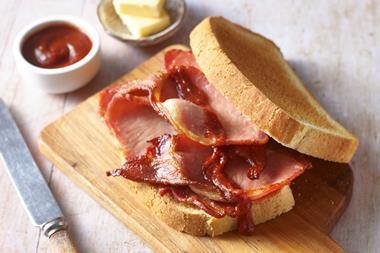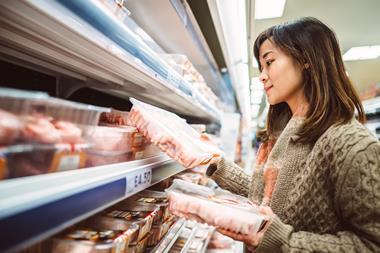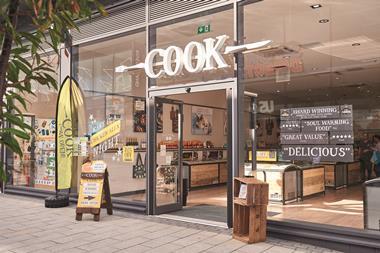What is wrong with retail pork market?
Foot and mouth disease is merely the latest in a series of traumas for the pig industry. Swine fever, the BSE scare on the continent, breeding herd contraction in this country due to financial pressure on farmers, and the continuing difficulties caused by the wasting diseases PMWS and PDNS have added to the muddle in procurement, processing and distribution.
So it would not have been surprising if erratic sourcing and volatile pricing caused signals from consumers to retailers and suppliers to become unintelligible.
Yet the latest Taylor Nelson Sofres figures on household pork consumption seem to tell the same simple story as data going back about two years: reduced purchase volumes are not being offset by similar or greater increases in expenditure as would be expected from enthusiastic shoppers responding to scarcity of their desired product.
In the most recent period, the four weeks to October 14, the 3.7% year-on-year rise in spending on pork looked almost respectable in isolation.
But it was the weakest increase in the category despite the sharpest drop in purchases apart from sliced cooked meats.
Similarly for the year to date, pork showed both the biggest fall in purchases and the smallest rise in expenditure.
The MLC's marketing team can provide evidence of promotional efforts boosting sales temporarily, but it is hard to avoid concluding pork has become a sideshow in the retail carcase meat market, perhaps taking over lamb's former role.
Last year total pork supply accounted for more than 18% of overall UK meat and poultry consumption.
However, as the chart based on MLC/NFS data for the same period hints, pork as a raw material for further processors and manufacturers is not matched by the shopper's perception of pork cuts or joints for the domestic dining table.
{{MEAT }}
Close menu
- Home
- Retail & Wholesale
-
Products & Suppliers
- Back to parent navigation item
- Products & Suppliers
-
Product Categories:
- Back to parent navigation item
- Product Categories:
- Alcoholic drinks
- Bakery
- Cereals & breakfast
- Cheese
- Chicken & poultry
- Chocolate
- Confectionery
- Crisps, nuts & snacks
- Dairy
- Fish
- Fresh produce
- Frozen
- Household
- Meat
- Own Label
- Sauces & condiments
- Seasonal
- Soft drinks
- Vaping
- Vegan & plant-based
- World foods
- Suppliers
- People
- Reports & Data
-
Topics A-Z
- Back to parent navigation item
- Topics A-Z
-
Popular topics:
- Back to parent navigation item
- Popular topics:
- Cost of living crisis
- Crime
- Deposit Return Schemes
- Finance
- Government & Regulation
- Health
- Inflation
- Loyalty
- Marketing
- Mergers & Acquisitions
- New Product Development
- Sourcing
- Supply chain
- Sustainability & environment
- Technology
- Ultra Processed Foods
- Vaping
- A-Z all topics
- Content by type:
- Events
- Ask iA (beta)
- Subscribe now
Sign in to comment on this article
Not logged in before? Register for FREE guest access today.
You will be able to:
- Read more stories
- Receive daily newsletters
- Comment on stories
Advert

















No comments yet